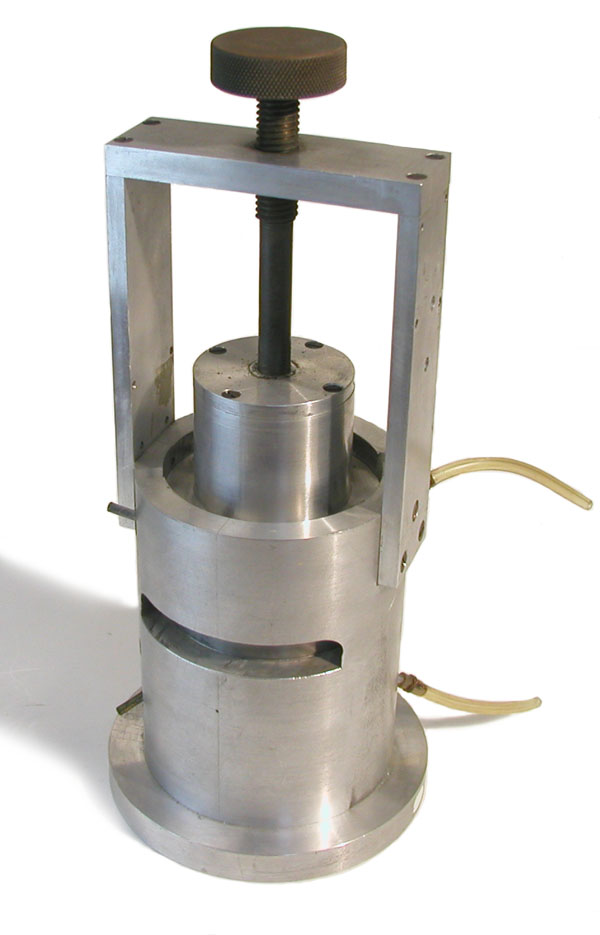Early 4 pi Gas Flow Proportional Counter (ca. 1950)

Given the fact that this instrument was excessed from Hanford in 1952 (according to the release sticker), it must be one of the earliest examples of a 4 pi gas flow proportional counter. Schutmeister and Meyer are generally credited with constructing the first true 4 pi detector in 1947-1948, and this instrument cannot have been built much later than that.
The term 4 pi refers to the solid angle (4 pi steradians) by which the detector "views" the sample. In a 4 pi geometry, the detector completely surrounds the source. This is accomplished by placing one counting chamber above the sample, and another below it. No matter in which direction the radiation leaves the sample, it can produce a pulse.
The radioactive sample, deposited on a very thin support (e.g., mylar), was inserted in the opening on the side. The upper chamber was then lowered until the sample was sandwiched between the upper and lower chambers. Gas inlets and outlets for the two chambers can be seen projecting from the sides of the unit.
Donated by Ron Kathren.
Reference
Mann, W.B., and Seliger, H.H., Preparation, Maintenance, and Application of Standards of Radioactivity, NBS Circular 594, 1958.
